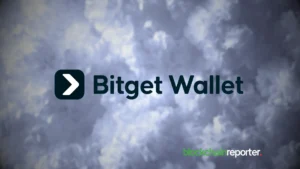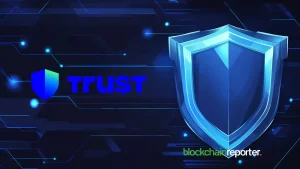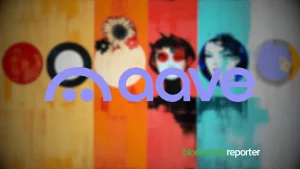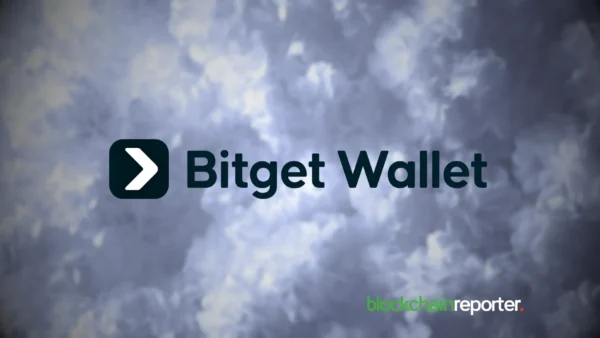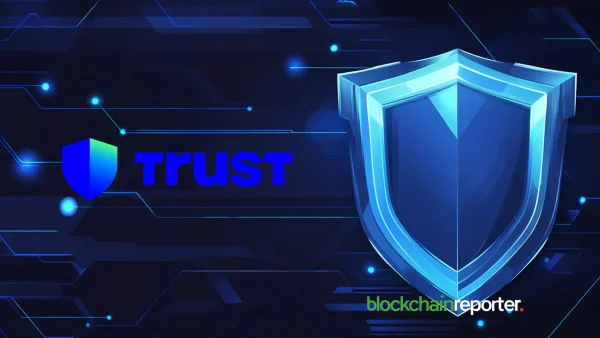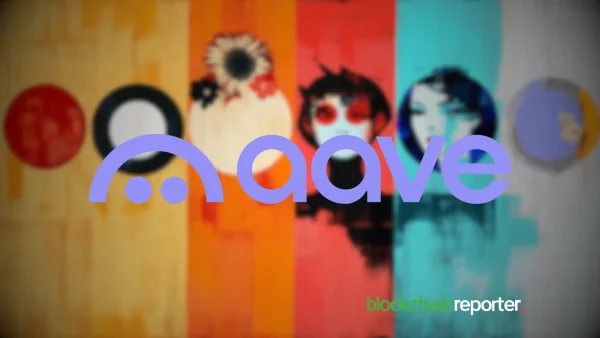
What is Web 3.0, a definition of the term, and examples of the use of this technology in the crypto world.
What Is Web3 ?
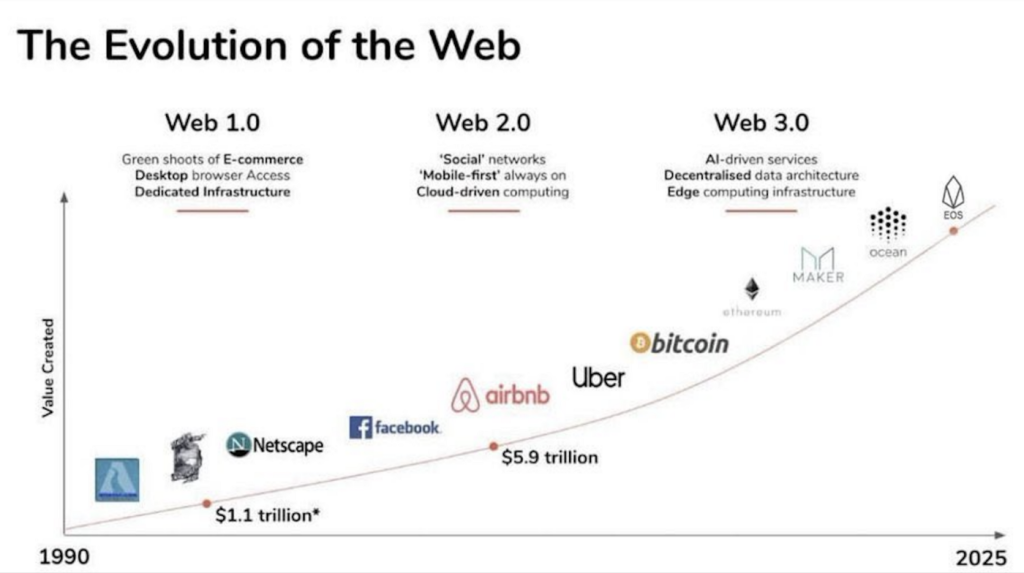
As we mention above Web3 is the next version of the internet, with the goal of transferring power away from huge tech corporations and toward ordinary consumers. But let’s dive deeper together and explore potentially generational technology.
Web3 (sometimes referred to as Web 3.0) is a notion for a new version of the World Wide Web based on blockchain technology and including principles like decentralization (DeFi) and token-based economy. Some journalists and engineers have compared it to Web 2.0, which claims that data and information are concentrated in a small group of businesses known as “Big Tech.” Ethereum co-founder Gavin Wood created the title “Web3” in 2014, and cryptocurrency enthusiasts, huge technological corporations, and venture capital firms expressed interest in the concept in 2021.
Through DeFi networks known as blockchains, ownership in Web3 may be represented by digital tokens or cryptocurrencies. For example, if you own enough digital tokens in a certain network, you may be able to influence its functioning or governance. Stockholder voting rights allow shareholders of record in a firm to vote on certain corporate activities in a comparable fashion.
Web History
The terms “Web 1.0” and “Web 2.0” relate to different periods in the history of the World Wide Web as it progressed via different technologies and forms. Most websites were static webpages during Web 1.0, which lasted roughly from 1991 to 2004, and the great majority of users were content consumers rather than producers. Web 2.0 is centered on user-created material published to forums, social media and networking sites, blogs, and wikis, among other services, and is founded on the concept of “the web as platform.” Web 2.0 is thought to have started about 2004 and is still going strong today.
Web 3.0 is a word that is often used. Let’s discuss about Web 3.0, which implies that there was a Web 1.0 and Web 2.0. Web 1.0 describes the web experience in the late 1990s, when most websites were static. The Read-Only Web is a term used to describe this period. The data was simply shown with little interaction. With reference to NFTs, Web 3.0, and Web 1.0, Chris Dixon, a well-known entrepreneur and investor, calls this skeuomorphism. He says that we use notions from old technologies to new ones in many new technologies. When we think about Web 1.0, we see websites that resembled newspapers or magazines because that’s what we were used to and what we were used to consuming.
We saw increasingly complicated websites develop as the interactive aspect of the web became obvious. Users have new ways to connect with sites like Yelp and Facebook, as well as the opportunity to quickly develop and contribute content to these sites. One might add a business to Yelp, write a review about it, or leave comments about it. This is Web 2.0, often known as the Read & Write Web. We now have unambiguous digital asset ownership thanks to the rise of blockchain and NFTs. Online 3.0 refers to a means of connecting with the web by using your own digital material. Web 3.0 is sometimes referred to as the Read, Write, and Own web. Users can submit material on existing Web 2.0 properties like Facebook or Twitter, but that content becomes the platform’s property (not user’s). When someone uploads material to a platform, the platform owns it.
Web 3.0 vs Web 2.0 vs Web 1.0
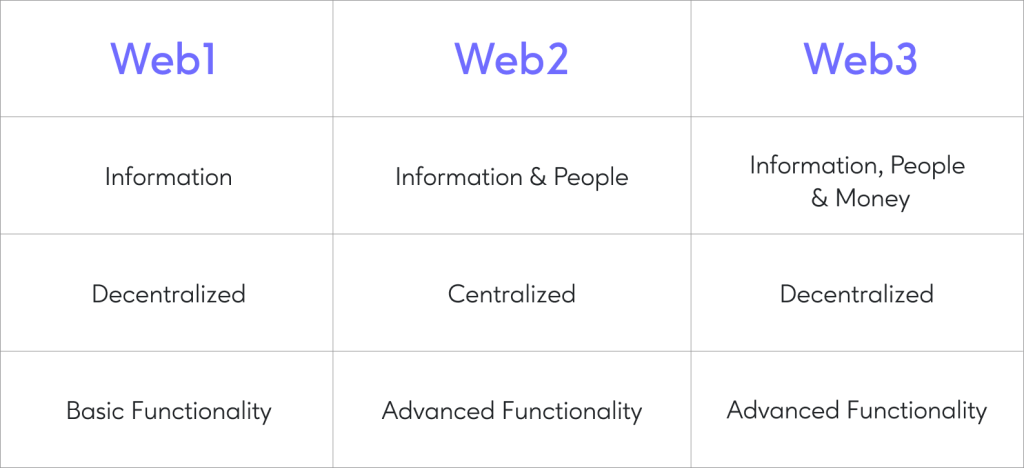
Web 1.0 – the earliest stage of the World Wide Web’s evolution. In Web 1.0, there were just a few content providers, with the vast majority of users being content consumers. Personal web sites were prevalent, and they mostly consisted of static pages housed on ISP-owned web servers or free web hosting services. Advertisements on websites while accessing the internet were prohibited in Web 1.0. Ofoto was also an online digital photography website in Web 1.0, where users could save, share, view, and print digital images.
A Web 1.0 site include these elements:
- Static pages.
- Content is served from the server’s file system.
- Pages built using Server Side Includes or Common Gateway Interface (CGI).
- Frames and Tables are used to position and align the elements on a page.
Web 2.0 – websites that emphasize user-generated content, usability, and interoperability for end users all over the world. The participatory social web is another name for Web 2.0. It does not relate to a change in a technical definition, but rather to a change in the way Web pages are built and used. Web 2.0 development employs web browser technologies such as AJAX and JavaScript frameworks. AJAX and JavaScript frameworks have recently become highly popular for developing web 2.0 sites.
A Web 2.0 site include those elements:
- Free sorting of information, permits users to retrieve and classify the information collectively.
- Dynamic content that is responsive to user input.
- Information flows between the site owner and site users by means of evaluation & online commenting.
- Developed APIs to allow self-usage, such as by a software application.
- Web access leads to concern different, from the traditional Internet user base to a wider variety of users.
Web 3.0 – the transformation of the web into a database is part of the growth of online usage and interaction. It enables the web’s back-end to be upgraded after a long period of focusing on the front-end (Web 2.0 has mainly been about AJAX, tagging, and another front-end user-experience innovation). Online 3.0 is a word that is used to define several different routes of web usage and interaction. In this case, data is shared rather than owned, and various services display different perspectives of the same site / data.
Web 3.0 has a few distinguishing characteristics, despite the lack of a recognized definition:
- Decentralization – This is a fundamental principle of Web 3.0. In Web 2.0, computers search for information via HTTP in the form of unique web addresses, which is stored in a fixed place, usually on a single server. Because Web 3.0 allows information to be retrieved based on its content, it may be kept in several locations at the same time, making it DeFi. With Web 3.0, users will be able to sell data created by a variety of increasingly sophisticated computer resources, such as mobile phones, PCs, appliances, automobiles, and sensors, across decentralized data networks, guaranteeing that people retain ownership control.
- Permissionless and trustless – Web 3.0 will be trustless (i.e., the network will allow members to engage directly without going via a trusted intermediary) and permissionless, in addition to being DeFi and built on open source software (meaning that anyone can participate without authorization from a governing body). As a result, Web 3.0 applications will operate on blockchains, decentralized peer-to-peer networks, or a combination of both, and will be referred to as dApps (decentralized apps).
- Connectivity and ubiquity – Information and content are increasingly accessible and omnipresent with Web 3.0, which can be accessed by many apps and a growing number of daily objects connected to the internet, such as the Internet of Things.
- Artificial intelligence (AI) and machine learning – Through technologies based on Semantic Web ideas and natural language processing, machines will be able to interpret information in the same way that people do in Web 3.0. Machine learning will also be used in Web 3.0, which is a form of artificial intelligence (AI) that combines data and algorithms to mimic how people learn while continuously increasing accuracy.
Web3 & Crypto
Diaspora, Mastodon, and PeerTube are decentralized systems that aspire to replace centralized providers like Facebook, Twitter, and YouTube. These systems do not run on a blockchain and do not monetise themselves using tokens, but they nevertheless meet some of the criteria. The broad use of decentralized systems faces major obstacles. Specifically, resolving their usability issues and combating the centralized platforms’ large network effects. Integration with existing systems will be critical for wider adoption.
Many blockchain and Web3 initiatives are built around DAOs, or Decentralized Autonomous Organizations. The Ethereum Foundation gives the following definition of DAOs: “Think of them like an internet-native business that’s collectively owned and managed by its members. They have built-in treasuries that no one has the authority to access without the approval of the group. Decisions are governed by proposals and voting to ensure everyone in the organization has a voice.”
DeFi, refers to anything from DEX (Decentralized Exchange) projects to blockchain-powered peer-to-peer lending networks. DeFi’s initial attraction was that it provided banking-like services to folks who couldn’t get standard banking services. However, if tax laws change, it’s uncertain whether DeFi will continue to be attractive in the Western world.
Web3 For Investors
For investors, Web3 may provide prospects related to DeFi, which might lead to the creation of new markets, similar to what bitcoin and non-fungible tokens have done. Investors may keep an eye out for new transactional infrastructures, such as loan protocols, that have the potential to disrupt the market. Although Web3 may be years away from gaining significant market share, investors and venture capitalists are expected to become increasingly interested as people get more knowledgeable about this upcoming phase of the web.
Investors appear to be gravitating to the emerging—if still somewhat undefined—space, despite the hefty prices. According to Crunchbase data, $17.9 billion was invested in 1,312 blockchain-related firms last year. That figure surpassed the previous high of $4.4 billion in 1,223 agreements set in 2018, as well as the $2.1 billion in 790 deals set in 2020. Investors have spent more than $3.8 billion into businesses in the field in 196 deals so far this year, breaking even with last year’s record pace.
While not every blockchain-related firm calls itself a Web3 startup, Crunchbase data reveals a large increase in investment for startups that use the terms “Web3” and “decentralized web” in their descriptions. Companies that define themselves as Web3 startups received $380 million in 93 agreements the previous year, up from only $20.5 million in 30 deals in 2020. In 34 deals so far this year, investors have invested over $173 million into firms in the field, indicating a growing awareness of the sometimes ill-defined space.
Few Web3 Examples
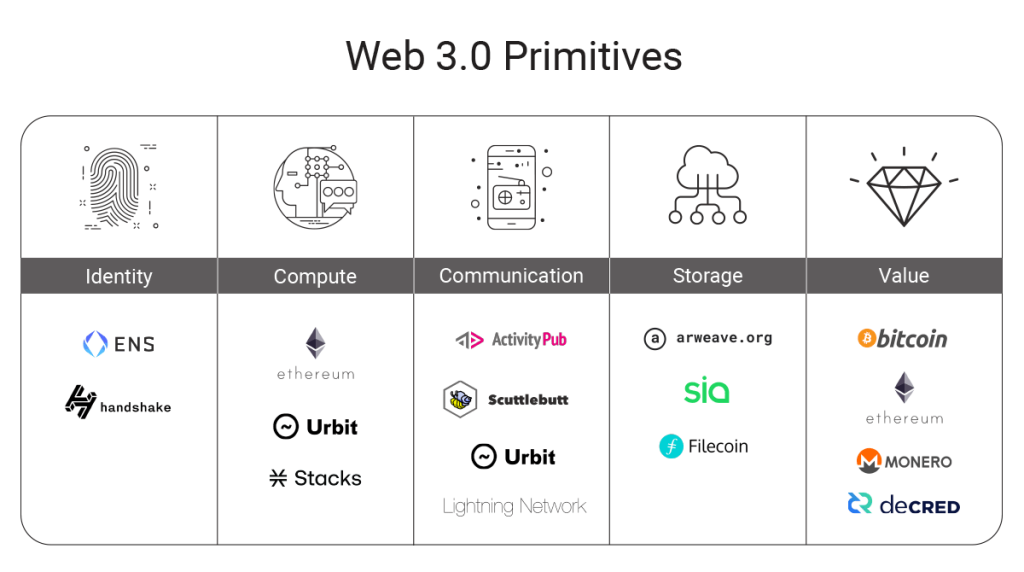
You can also acknowledge few of other Web3 examples which ain’t in the table above: Metaverse, NFT, Blockchain Technology, AI, DAO, Diaspora, Steemit, Augur, OpenSea, Sapien, Uniswap, Everledger. It’s not a secret that many more other projects will integrate Web3 technology in the near future to proceed with a smooth evolutionary step in the society.
Frequently Asked Questions
What is Web 3.0 and how is it different from Web 1.0 and Web 2.0?
Web 3.0, also known as Web3, represents the next generation of the internet that focuses on decentralization, digital ownership, and blockchain technology. Unlike Web 1.0, which was mostly static and read-only, or Web 2.0, which introduced user-generated content controlled by big tech platforms, Web 3.0 allows users to truly own their data and interact in peer-to-peer networks without centralized intermediaries.
What are the key features of Web 3.0?
Web 3.0 is defined by decentralization, trustless interactions, and token-based economies. Information is no longer stored on central servers but distributed across blockchain networks. Users can interact without needing permission from third parties, and cryptocurrencies or tokens are used to access, govern, or trade within digital ecosystems. Artificial intelligence and machine learning also play a role in how data is processed and personalized across Web3 applications.
How is Web 3.0 used in the crypto world?
Web 3.0 powers many parts of the crypto industry. DeFi platforms allow people to lend, borrow, and trade assets without banks. NFTs give users true ownership of digital items like art, music, and in-game assets. DAOs enable communities to manage funds and decisions collectively. The metaverse connects these technologies into shared virtual environments, while platforms like OpenSea, Uniswap, and MakerDAO showcase practical use cases built entirely on Web3 principles.
Why is Web 3.0 important for investors and the future of the internet?
Web 3.0 introduces a new kind of ownership and interaction online, attracting billions in venture capital. It has the potential to reshape industries from finance to gaming by removing middlemen and giving users more control. Investors are excited by the promise of scalable decentralized systems, new business models, and open financial infrastructure. As more people understand these innovations, the space is expected to grow rapidly.
What are some real-world examples of Web 3.0 platforms or projects?
Examples of Web 3.0 projects include OpenSea for trading NFTs, Uniswap for decentralized crypto exchanges, Decentraland for owning land in the metaverse, and Steemit for social media content ownership. Other platforms like Everledger use blockchain to track supply chains, while DAOs like MakerDAO let users participate in governance. These real-world examples show how Web 3.0 is already changing how we interact, transact, and build online.


